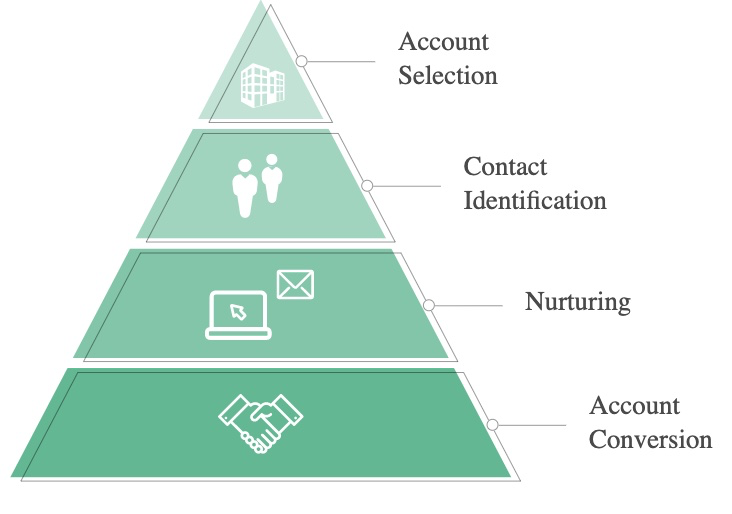
Resource Library · Slack Community · About Us · Help
Extracted from:
Why ABS is Even More Critical During COVID-19 | Crunchbase
If you’re in business-to-business (B2B) sales, odds are you’ve heard the term “account-based selling” more than once. While it is not a new term or sales strategy, salespeople are now facing a challenging landscape that calls for different approaches and new strategies. For companies able to stay afloat, COVID-19 has shifted priorities across the board and placed immense pressure on sales teams’ performance to keep the lights on.
As we navigate a dramatically fluctuating economy, it is more important than ever for B2B salespeople to employ the notion of “quality over quantity” in the pursuit of new opportunities, and to be empathetic to the many changes potential prospects are experiencing. Account-based selling is one way to do just that.
Here’s a quick rundown on account-based selling to help get your teams up to speed and on board with this strategy as it becomes increasingly important to lead with empathy, optimize workflows, and focus energy on tactics that generate the highest return on investment.
Account-based selling is an approach to sales that prioritizes identifying high-value accounts and implementing a coordinated, cross-functional B2B sales approach to closing those accounts. In this approach, marketing and sales teams work hand in hand to identify target accounts and develop an integrated and personalized plan that thoughtfully leads each account through the sales cycle. In light of the current situation, being thoughtful is more important than ever.
Traditional contact-first lead generation takes the “spray and pray” approach to sales in which SDRs first identify individuals with certain job titles or functions that indicate they might be interested in a product. After SDRs make countless cold calls and send hundreds of emails, the small percentage of leads who respond are passed along to AEs who are then tasked with meeting prospects and closing deals.

Account-based selling on the other hand, starts with identification of high-priority accounts. Sales and marketing teams then come together to develop an integrated and personalized strategy to target those accounts and reach out to specific contacts and key decision-makers, who, being more familiar with the product you are trying to sell, are more likely to respond. From there, your team invests in nurturing and expanding awareness of your product with all key decision-makers at a company, before eventually converting larger deals in a more thoughtful manner.

As the economy continues to fluctuate dramatically in response to COVID-19, prospects are not only harder to come by, but less likely to have the budget to invest in your service. It’s important to understand that many companies are seeing tightening–or even completely frozen–budgets. That means sales outreach strategies that prioritize call volume and contact with individual leads are far less likely to result in conversions, and far more likely to seem tone deaf, resulting in missed quotas.
By abandoning a strategy that casts a wide, but less-than-strategic, net and taking a “quality over quantity” approach by utilizing account-based selling, your team is more likely to close deals. Not only are you focused on identifying accounts that have demonstrated interest in your service, you are also incorporating the most important factor in any sales strategy: targeting accounts that currently have the budget to buy.